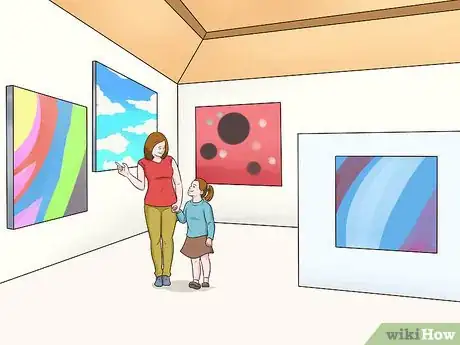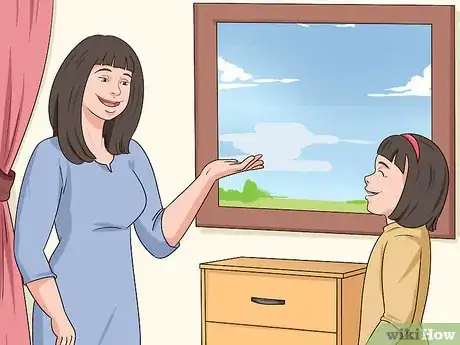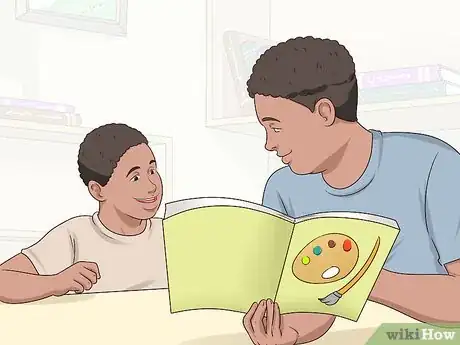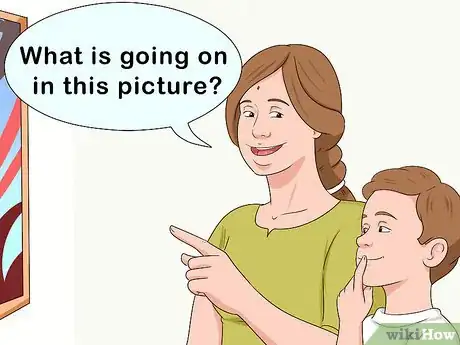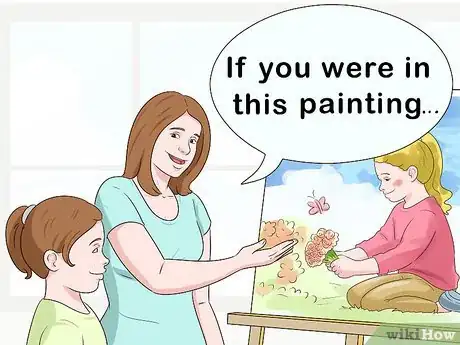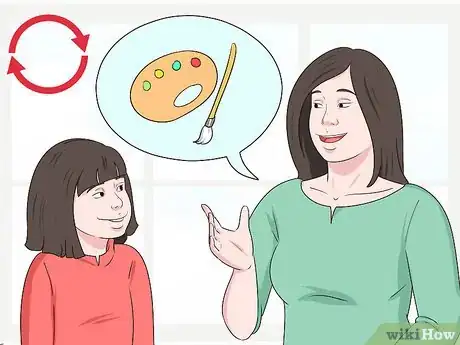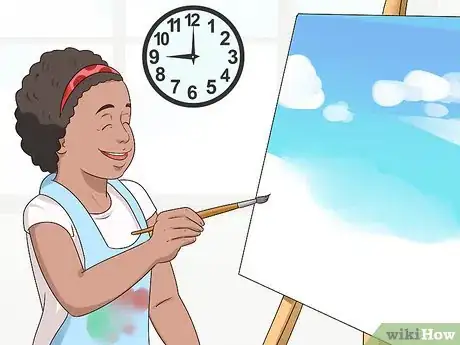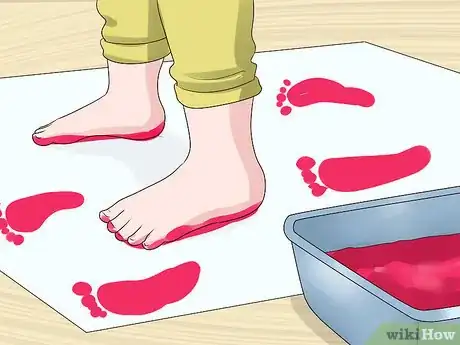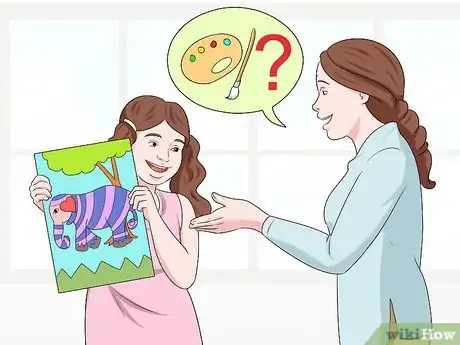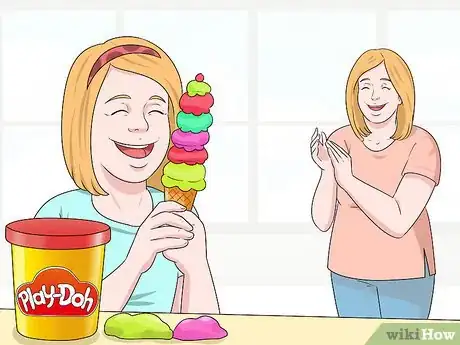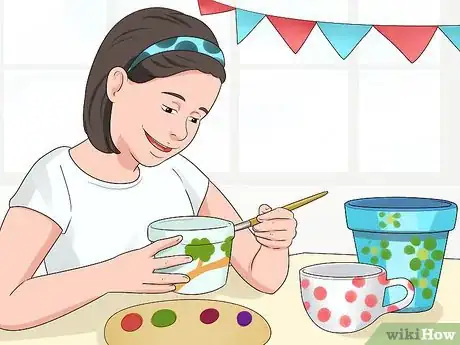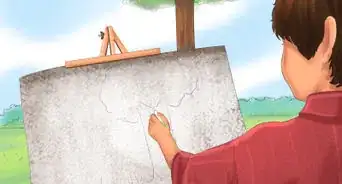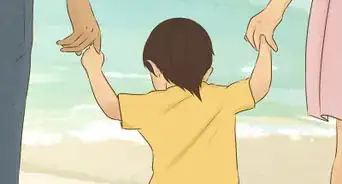This article was co-authored by Bianca Solorzano, M.Ed.. Bianca Solorzano is an Infant Development Specialist, Montessori Consultant, and the Founder of Baby Tour Guide Inc. Through her company, she helps parents, educators, and caregivers optimize baby and toddler development using a Montessori Lens. She does so by providing one-on-one consulting, running her blog, and hosting the Montessori Babies Podcast. With more than 11 years of experience in child development, she specializes in supporting parents in approaches such as purposeful language, environment setup, toys/activities that aid in development, positive redirection and behavior, and directed choice. Bianca holds a BS in Child and Adolescent Development with a focus in Early Childhood Education from California State University, Fullerton, a Masters in Montessori Education from Loyola University Maryland, and the AMI International Montessori Certification from The Montessori Institute of San Diego for children Birth-3 Years. Bianca is also a member of the National Association for the Education of Young Children (NAEYC).
There are 11 references cited in this article, which can be found at the bottom of the page.
This article has been viewed 17,075 times.
Art is an essential part of any child's education and upbringing. Giving your child an appreciation for art encourages imagination, creativity, self-expression and logical thinking.[1] It promotes self-esteem, and can even support growth in math and reading.[2] Plus it’s fun! Frequently exposing your child to art, discussing art with them, and encouraging artistic exploration are a few ways to help your child learn to appreciate art.[3]
Steps
Exposing Your Child to Art
-
1Visit museums. Take advantage of your local museums — they’re a great resource for getting your child interested in art! Many museums have children’s sections designed to be accessible, engaging and fun. Kids often receive free or reduced admission.
- Before you go to the museum, look online for pictures and videos of the artwork you'll be seeing. Show your kids before you go so they know what kind of art to expect. Previewing the art beforehand might get them more excited![4]
- If your children don’t immediately show interest at museums, try taking them to the museum store. Children often get excited by the idea of choosing an item they can purchase and take home.[5]
- Go to museums when you travel as well. Letting your kids see different types of exhibits and art museums will increase their appreciation for art. When your children are older, allow them to participate in travel planning. Let them choose between different museums you could visit.[6]
-
2View art at home.[7] Museums can be a bit of a hassle with young children. There’s nothing wrong with displaying artwork in the comfort of your home.[8] In fact, your child may feel more comfortable contemplating and discussing art in a familiar atmosphere. There are many great websites & apps appropriate for children of different ages.[9]
- Expose your child to different art movements, like impressionism, surrealism, pop art and abstract art. Just like adults, each child will have different reactions to different works. Encourage your child to further explore types of art they’re interested in.
- If your child is drawn to a particular art style, offer to make art like that with them at home.
Advertisement -
3Explore your local library. There will likely be an entire section devoted to books on art and artists.[10] There may even be an art section within the kids' section. If you have trouble finding something appropriate for your child, you can always ask for help from a librarian.
Discussing Art With Your Child
-
1Ask open-ended questions. Try not to give away answers before kids have the chance to think for themselves. Open-ended questions will allow them to develop their own ideas about what they see.[11] Try simple questions like:
- What is going on in this picture?
- What do you see that makes you say that?
- How does this piece make you feel?
- What more can we find?
-
2Ask questions that connect art to life. Children enjoy finding connections between artwork and other things. Prompt them with questions that encourage them to think creatively. Examples might include:
- If you were in this painting, what would you be doing?
- What would this painting taste like?
- What type of animal would this painting be?
- Imagine you’re walking in this painting with bare feet — how does it feel?
-
3Use creative exercises.[12] There’s no need for art appreciation to be a solemn activity for young children. Engage your child with fun questions and activities that require their imagination.
-
4Talk about art frequently. Encourage critical thinking by asking your child questions any time they’re viewing art. You don’t need to be in a formal setting. This can be done when you encounter public art, album covers, or even with billboards or graffiti! Anything can be an opportunity to promote critical thinking and visual literacy.[15]
- You can discuss animated films in artistic terms as well. How do they feel about the animation style? If a character evokes a strong reaction in your child, what is it about that character that makes them feel that way?
Encouraging Your Child to Create Art
-
1Set aside some daily time for art.[16] It’s important to allow children to create, experiment and discover. Give them access to a wide variety of supplies & allow your child to make their own decisions about what supplies to use.
- Typical supplies like paints, markers, crayons & construction paper are great. You can also try mixing it up with things like tissue paper, sponges, paper towel tubes & old magazines. Experiment with different activities (drawing, painting, collaging) and allow your child to discover what they like best.
-
2Make art fun and accessible. Don’t limit your child to rigid time blocks. Make a variety of art supplies like sidewalk chalk, coloring books and clay readily available. Try various approaches — you may be surprised by what resonates best with your child. Some children thrive with a little more guidance. Others may be more tactile learners.
- If your kids show an interest in making sculptures, buy some playdough or make your own at home. If your kids are older, get them some air-drying or bakeable clay to work with.[17]
- You can also give your kids a child-safe digital or instant camera to take pictures with. You can even make an album with all of their photos so they have a collection of their artwork.
- With infants and toddlers, give them edible finger paints to make art with. You can tape down sheets of paper on the floor or let them paint their bodies and faces.[18]
-
3Talk to your child about their creations. Discussing art with your child encourages reflection and critical thinking. Invite your child to tell you about their painting. Ask them to elaborate on details. Discuss what emotions went into their artwork. Readily offer praise, and avoid criticizing or judging their work — especially at younger ages. Remember, the process of creating art is more important than the end product.[19]
-
4Encourage any artistic activity they enjoy. Whether they want to draw silly cartoons, paint still-lifes or sculpt Play-Doh masterpieces, it’s important that you encourage any artistic endeavor. Provide necessary supplies, verbally praise them, and show them that you’re proud by sharing their work with family & friends.
-
5Enroll your child in art classes. There may be after-school programs available, or lessons at your local recreational center or community college. If multiple options are available, consider allowing your child to pick what they’d like to try. Encourage them to stick with it for a little while before moving on to something else.
-
6Look for kid-friendly arts events in your community. There could be an outdoor art festival, a paint-your-own-pottery workshop, or even a performance at your local library. Keep an eye out for any art-related activities your child might enjoy. Newspapers, alt-weeklies, local blogs and fellow parents can be great resources for keeping track of events.
Expert Q&A
-
QuestionCan children appreciate art?
 Bianca Solorzano, M.Ed.Bianca Solorzano is an Infant Development Specialist, Montessori Consultant, and the Founder of Baby Tour Guide Inc. Through her company, she helps parents, educators, and caregivers optimize baby and toddler development using a Montessori Lens. She does so by providing one-on-one consulting, running her blog, and hosting the Montessori Babies Podcast. With more than 11 years of experience in child development, she specializes in supporting parents in approaches such as purposeful language, environment setup, toys/activities that aid in development, positive redirection and behavior, and directed choice. Bianca holds a BS in Child and Adolescent Development with a focus in Early Childhood Education from California State University, Fullerton, a Masters in Montessori Education from Loyola University Maryland, and the AMI International Montessori Certification from The Montessori Institute of San Diego for children Birth-3 Years. Bianca is also a member of the National Association for the Education of Young Children (NAEYC).
Bianca Solorzano, M.Ed.Bianca Solorzano is an Infant Development Specialist, Montessori Consultant, and the Founder of Baby Tour Guide Inc. Through her company, she helps parents, educators, and caregivers optimize baby and toddler development using a Montessori Lens. She does so by providing one-on-one consulting, running her blog, and hosting the Montessori Babies Podcast. With more than 11 years of experience in child development, she specializes in supporting parents in approaches such as purposeful language, environment setup, toys/activities that aid in development, positive redirection and behavior, and directed choice. Bianca holds a BS in Child and Adolescent Development with a focus in Early Childhood Education from California State University, Fullerton, a Masters in Montessori Education from Loyola University Maryland, and the AMI International Montessori Certification from The Montessori Institute of San Diego for children Birth-3 Years. Bianca is also a member of the National Association for the Education of Young Children (NAEYC).
Infant Development & Montessori Consultant Yes, they can! Children are innately curious about their creative world, and exposure and opportunity for art experience is essential when it comes to encouraging creativity and artistic expression.
Yes, they can! Children are innately curious about their creative world, and exposure and opportunity for art experience is essential when it comes to encouraging creativity and artistic expression. -
QuestionHow do you develop appreciation in art?
 Bianca Solorzano, M.Ed.Bianca Solorzano is an Infant Development Specialist, Montessori Consultant, and the Founder of Baby Tour Guide Inc. Through her company, she helps parents, educators, and caregivers optimize baby and toddler development using a Montessori Lens. She does so by providing one-on-one consulting, running her blog, and hosting the Montessori Babies Podcast. With more than 11 years of experience in child development, she specializes in supporting parents in approaches such as purposeful language, environment setup, toys/activities that aid in development, positive redirection and behavior, and directed choice. Bianca holds a BS in Child and Adolescent Development with a focus in Early Childhood Education from California State University, Fullerton, a Masters in Montessori Education from Loyola University Maryland, and the AMI International Montessori Certification from The Montessori Institute of San Diego for children Birth-3 Years. Bianca is also a member of the National Association for the Education of Young Children (NAEYC).
Bianca Solorzano, M.Ed.Bianca Solorzano is an Infant Development Specialist, Montessori Consultant, and the Founder of Baby Tour Guide Inc. Through her company, she helps parents, educators, and caregivers optimize baby and toddler development using a Montessori Lens. She does so by providing one-on-one consulting, running her blog, and hosting the Montessori Babies Podcast. With more than 11 years of experience in child development, she specializes in supporting parents in approaches such as purposeful language, environment setup, toys/activities that aid in development, positive redirection and behavior, and directed choice. Bianca holds a BS in Child and Adolescent Development with a focus in Early Childhood Education from California State University, Fullerton, a Masters in Montessori Education from Loyola University Maryland, and the AMI International Montessori Certification from The Montessori Institute of San Diego for children Birth-3 Years. Bianca is also a member of the National Association for the Education of Young Children (NAEYC).
Infant Development & Montessori Consultant Offering a daily art experience for young children is a wonderful way to encourage artistic expression and appreciation. Try offering them books that discuss famous artists and put art on the walls at your child's height.
Offering a daily art experience for young children is a wonderful way to encourage artistic expression and appreciation. Try offering them books that discuss famous artists and put art on the walls at your child's height.
References
- ↑ http://www.pbs.org/parents/education/music-arts/early-art-what-it-means-and-how-to-encourage-it/
- ↑ https://edsource.org/2015/art-appreciation-helps-young-children-learn-to-think-and-express-ideas/77734
- ↑ Bianca Solorzano, M.Ed.. Infant Development & Montessori Consultant. Expert Interview. 1 November 2021.
- ↑ http://www.qm.qld.gov.au/~/media/Documents/Learning+resources/QMSB/Manuals/enhancing-childrens-museum-experiences.pdf
- ↑ http://www.huffingtonpost.com/oren-miller/how-to-get-kids-to-appreciate-art_b_5348355.html
- ↑ https://www.wanderingeducators.com/best/top-10/7-tips-teaching-your-kids-appreciate-art-museums.html
- ↑ Bianca Solorzano, M.Ed.. Infant Development & Montessori Consultant. Expert Interview. 1 November 2021.
- ↑ https://www.powerfulmothering.com/how-to-look-at-art-with-toddlers-and-preschoolers/
- ↑ http://www.kidsites.com/sites-edu/art.htm
- ↑ Bianca Solorzano, M.Ed.. Infant Development & Montessori Consultant. Expert Interview. 1 November 2021.
- ↑ http://artcuratorforkids.com/how-to-and-why-look-at-art-with-children/
- ↑ Bianca Solorzano, M.Ed.. Infant Development & Montessori Consultant. Expert Interview. 1 November 2021.
- ↑ http://artcuratorforkids.com/how-to-and-why-look-at-art-with-children/
- ↑ Bianca Solorzano, M.Ed.. Infant Development & Montessori Consultant. Expert Interview. 1 November 2021.
- ↑ http://artbusinessnews.com/2015/12/visual-literacy-the-holy-grail-of-art/
- ↑ Bianca Solorzano, M.Ed.. Infant Development & Montessori Consultant. Expert Interview. 1 November 2021.
- ↑ http://allrecipes.com/recipe/175520/colorful-and-edible-play-dough/
- ↑ http://www.pbs.org/parents/education/music-arts/early-art-what-it-means-and-how-to-encourage-it/
- ↑ http://www.pbs.org/parents/education/music-arts/early-art-what-it-means-and-how-to-encourage-it/
- ↑ http://www.pbs.org/parents/education/music-arts/early-art-what-it-means-and-how-to-encourage-it/
About This Article
Help your child appreciate art by providing opportunities for them to see and make it themselves. Make art available in your home by selecting books from your library or downloading apps to discuss artists or stylistic periods. After learning together, take time to be creative and make their own masterpiece. Outside your home, look for community events and workshops or enroll them in after-school programs that offer creative activities if visiting an art museum is too stressful. Read below for guided questions to get your kids thinking and talking about art.

